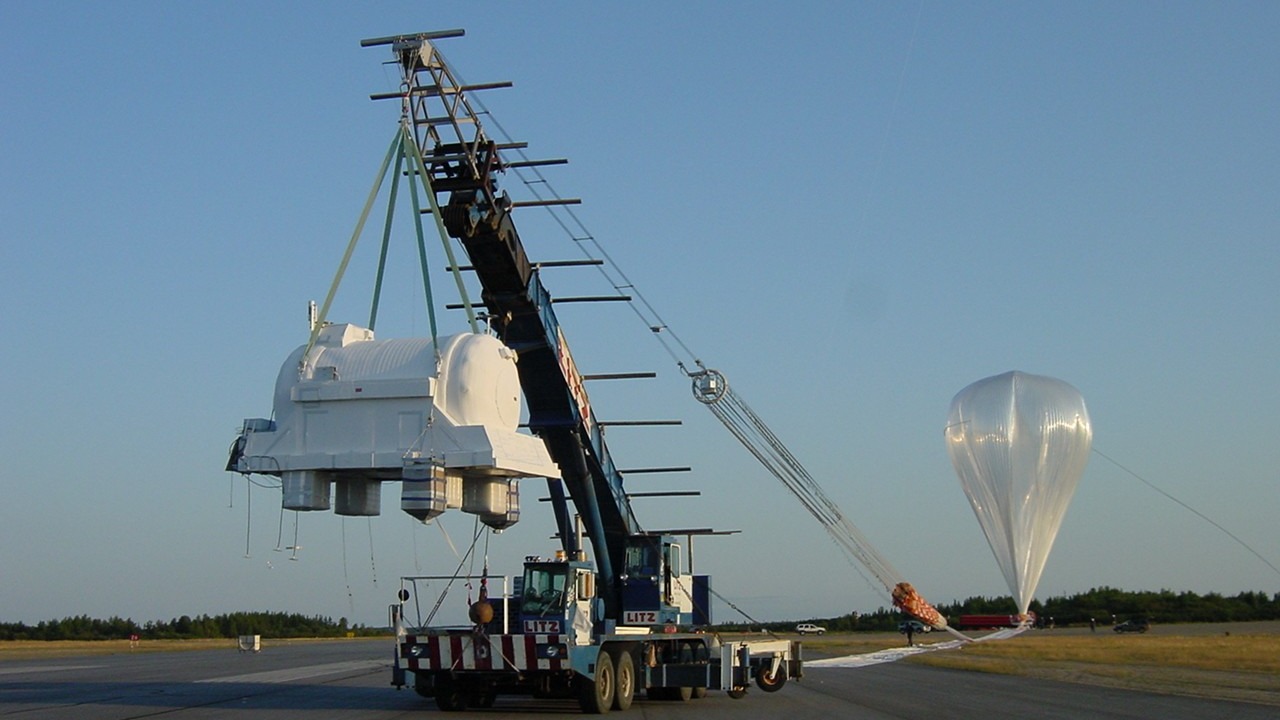
A high-altitude scientific balloon operated by NASA’s Columbia Scientific Balloon Facility, carrying the EXCITE instrument for exoplanet atmospheric studies, experienced an anomaly during its flight on September 12, 2023. This led to an unplanned descent and landing in a remote area near Marathon, Texas. The incident sparked social media claims of a “crash,” but lead scientist Sarah Hörst of Johns Hopkins University clarified that the balloon executed a controlled recovery after a battery issue, with no damage to the payload and the mission deemed a success overall. This event highlights the routine risks of stratospheric ballooning for space science, as confirmed by NASA officials.
The Mission’s Objectives and Launch
The EXCITE (Exoplanet Characterization with Infrared Telescope Explorer) instrument was designed to observe exoplanet atmospheres using mid-infrared spectroscopy. This sophisticated tool aimed to gather data during a planned 3-day flight at an altitude of 125,000 feet. The mission’s primary goal was to enhance our understanding of exoplanetary atmospheres, potentially shedding light on their habitability and composition. Such insights are crucial for the broader field of exoplanet research, which seeks to identify planets beyond our solar system that might support life.
The mission launched from the NASA Columbia Scientific Balloon Facility in Fort Sumner, New Mexico. It involved a massive 29 million cubic foot zero-pressure balloon, which carried a payload weighing 2,500 pounds. This launch was part of NASA’s ongoing efforts to utilize high-altitude balloons for scientific research, offering a cost-effective alternative to satellite missions. The team behind this mission included principal investigator Sarah Hörst from Johns Hopkins University Applied Physics Laboratory, along with collaborators from NASA Goddard Space Flight Center. Their combined expertise was instrumental in the mission’s design and execution.
The Incident: What Actually Happened in Texas
After 48 hours aloft, the balloon encountered a lithium-ion battery thermal runaway at approximately 10:00 AM CDT on September 14, 2023. This prompted an immediate command to descend, as safety protocols dictated. The incident underscores the inherent risks associated with using advanced technology in extreme environments. However, the balloon’s design allowed for a controlled parachute landing in Brewster County, Texas, near Marathon. Ground teams swiftly recovered the intact payload within hours, and no injuries were reported, demonstrating the effectiveness of the safety measures in place.
Sarah Hörst emphasized that “this was not a crash; it was a safe termination of the flight due to a minor anomaly—balloons like this are designed for such scenarios.” Her statement highlights the importance of understanding the operational procedures for scientific balloons, which are engineered to handle unexpected situations safely. The successful recovery of the payload ensured that the mission’s scientific objectives were largely met, despite the unforeseen battery issue.
Social Media Misinformation and NASA’s Response
Following the incident, viral posts on X (formerly Twitter) falsely described the event as a “NASA balloon crash in Texas,” accompanied by images of the deflated balloon. These posts quickly amassed over 50,000 views, illustrating the rapid spread of misinformation on social media platforms. Such mischaracterizations can undermine public understanding of scientific missions and the challenges they face. NASA responded promptly to these claims, with the Columbia Scientific Balloon Facility’s Twitter account stating on September 16, 2023, that “the EXCITE flight concluded nominally after a battery issue; all systems recovered successfully—no crash occurred.”
Local Texas media, such as the Alpine Avalanche newspaper, initially reported the event as a “hard landing” but later corrected their coverage based on NASA’s input. This situation highlights the critical role of accurate reporting and the need for media outlets to verify information with authoritative sources. NASA’s transparent communication helped clarify the situation, reinforcing the importance of official channels in disseminating accurate information about scientific endeavors.
Lessons Learned and Future Implications
Post-flight analysis revealed that the battery anomaly stemmed from a manufacturing defect in a single cell. Fortunately, this issue did not impact the EXCITE instrument’s data collection, which successfully gathered over 20 hours of exoplanet observations. These findings will contribute to upcoming publications on exoplanet habitability, advancing our knowledge in this exciting field. The incident serves as a reminder of the complexities involved in high-altitude balloon missions and the need for rigorous testing and quality control in all components.
In response to the battery issue, NASA announced enhancements to battery safety protocols for future flights, including redundant monitoring systems. These upgrades, announced on October 5, 2023, aim to prevent similar incidents and ensure the continued success of NASA’s balloon program. With a 95% success rate, these missions remain a vital part of NASA’s scientific research efforts, offering unique opportunities to study phenomena that are otherwise difficult to observe.
The EXCITE mission’s data will play a crucial role in ongoing research into exoplanetary atmospheres, potentially leading to breakthroughs in our understanding of these distant worlds. As the scientific community analyzes the data collected, the insights gained could inform future missions and guide the search for life beyond Earth. This mission exemplifies the challenges and rewards of cutting-edge space science, highlighting the importance of resilience and adaptability in the face of unexpected challenges.